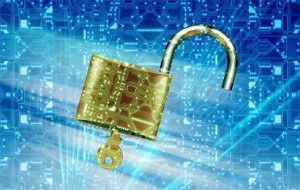4 Easy Steps To Protect Your Sustainable Business

Starting and running a business is no easy feat. Although many companies are springing up, only
33%
of them survive within the first ten years, and it might even be a lot more difficult for green and sustainable companies. These statistics can be somewhat discouraging, whether you just
started your business
or have been in operation for a few years. Therefore, you must take steps to ensure that your business is adequately protected to withstand all types of challenges it might encounter. So, how can you protect your business? Here are a few steps you can take to ensure that your business withstands the test of time:
Protect your data
It is essential for sustainable businesses to store critical information, whether it is employee records, customer information, or transactions. It is even more imperative for sustainable enterprises to store data in the cloud to reduce how much paper they use. Otherwise, you might find your business as part of the 60%
that closed down due to data breaches. Plus, you need not worry about your hard drive getting crashed or losing your data to natural disasters like fires. When you take steps to protect your data, you lessen the risk of your data getting misused for vices such as phishing scams and fraud. What you can do to protect your business’ information is to install firewalls, organize cybersecurity training sessions for your employees, and use strong passwords.
Hire an accountant
If your sustainable business has been in operation for some time now, and you see a lot of growth and potential, it might be the best time to hire an accountant. An accountant can provide you with expert advice to assist with your development, including hiring new employees, managing utility payments, and expanding your office space. If possible, you can hire an in-house accountant for your business. Otherwise, it is perfectly okay to outsource. You can weigh the options to find the one that best suits your business’s needs, as well as the budget. You can also use a
Verifiable Credential Platform
to ensure they have the right credentials for the job.
Get business insurance
When you are operating a sustainable business, you are responsible for your employees’ and customers’ well-being. Whatever decisions you make for your company affects them, and when you have business insurance, it might protect you financially from some of the consequences. Many businesses typically get general liability insurance that covers parties that are harmed by your business’ practices. Other states require that you get other forms of business insurance, such as workman’s compensation insurance, which protects your employees that get hurt while working. Companies like Simply Business offer various types of business insurance, depending on the type of business you operate. Check out simplybusiness.com
for more essential information.
Research your customers
Before you start working with a new client, ensure that you conduct a full credit check, especially if you render a service. That will protect you and your business from having stacks of unpaid invoices and defaulting customers. Ensure that before you work for a customer, you must have a contract. If any problem develops, the contract or agreement will be the piece of evidence that might help you get the money you deserve.
Regardless of your business’s size, it would be best if you adopted measures to secure it. Hopefully, these tips should help you get started.


